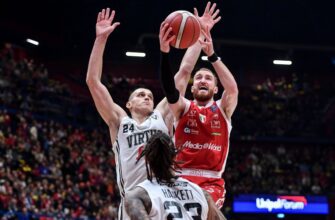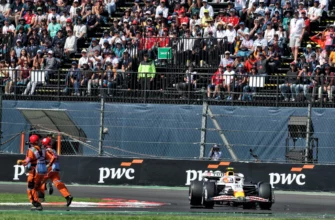The Stanley Cup playoffs consistently offer valuable insights, whether derived from moments of success or periods of failure. These lessons can sometimes endure, while at other times they fade or are supplanted by new observations as the postseason unfolds. Based on the games played through Monday night, here are some significant takeaways from the 2025 Stanley Cup playoffs.
The Resilient Maple Leafs
Despite the heavy historical burden of a Stanley Cup drought stretching back to 1967 and a reputation for playoff collapses, the Toronto Maple Leafs of 2025 appear to have undergone a fundamental shift. Unlike past teams prone to psychological fragility, this iteration demonstrates remarkable resilience. The “Core Five” players are delivering pivotal performances under pressure, and coach Craig Berube`s emphasis on mental toughness, reminiscent of his 2019 championship team, is clearly impacting the group. They successfully navigated adversity in the first round, winning Game 6 on the road after losing Game 5 at home – a scenario where previous Leafs teams might have faltered. They also held off a significant comeback attempt in Game 1 of the second round. This team seems built differently, perhaps having internalized lessons from past failures and benefiting from coaching that fosters focus and composure amid external noise. While caution is warranted given their history, there`s a growing sense that these Maple Leafs could genuinely be Stanley Cup contenders.
Are High-Scoring Playoffs the New Normal?
Traditional wisdom pictures a Game 7 as a tense, low-scoring defensive battle where goals are scarce and goaltenders shine. However, the 2025 playoffs have presented a different picture, with Game 7s featuring scores like 4-2 and 4-3 (in double overtime), indicating a broader trend towards increased offense. The first round averaged 6.53 goals per game, a rate potentially unmatched since the 1992-93 postseason. This mirrors recent regular season trends where league-wide scoring has remained elevated. A major contributor is the consistent effectiveness of power plays, which boasted a 21.6% success rate in the regular season and surged to 24.9% in the first round of the playoffs. The notion that playoff hockey is an entirely different, low-scoring sport is being challenged as offensive trends from the regular season continue to influence postseason play.
Mikko Rantanen Proves His Worth
Mikko Rantanen delivered an unforgettable performance against his former team, the Colorado Avalanche, emphatically demonstrating his value. His spectacular 11-point outburst in the final three games of the series was instrumental in the Dallas Stars` victory and included several historic individual achievements. Rantanen is playing like a true playoff Most Valuable Player for Dallas. The Avalanche`s decision to trade him for salary cap flexibility now appears questionable, especially when comparing his impact to that of his replacement. Carolina had acquired Rantanen (along with other clutch players like Jake Guentzel) but ultimately couldn`t retain him. The compelling narrative of Rantanen facing and eliminating his old team in the first round has been a highlight, prompting speculation about whether the “Hockey Gods” might arrange a final round showdown against another former team, the Hurricanes.
Game 7 Rallies Despite Injuries: The “Ewing Theory” Effect
Two first-round Game 7s featured surprising comebacks: the Dallas Stars overcame a two-goal deficit without injured key players Jason Robertson and Miro Heiskanen, and the Winnipeg Jets rallied from a similar deficit without Mark Scheifele and most of Josh Morrissey`s services. While counter-intuitive – logically, a team is stronger with its stars – these situations arguably demonstrate the “Ewing Theory” effect, where other players step up their game in the absence of the usual leaders. Role players took on bigger defensive assignments, and depth forwards found ways to contribute crucial offense. These victories showcased resilience and depth, proving that a team`s collective will can sometimes compensate for missing star power, though both teams would certainly prefer to have their injured players back for the next round.
The Power of Super Mega Lines
While championship teams are often lauded for their depth throughout the lineup, the impact of concentrating elite talent into “Super Mega Lines” is undeniable and provides thrilling viewing. The Vegas Golden Knights effectively utilized a top unit of Jack Eichel, Mark Stone, and William Karlsson in their series-clinching game, successfully slowing down and outscoring the opponent`s primary offensive threat. As Eichel and Stone found their rhythm later in the series, this loaded line became a decisive factor. It remains to be seen if Vegas will deploy this formidable trio against the Edmonton Oilers` own pair of superstar threats, but the strategy highlighted how combining top-tier talent can dominate critical moments in the playoffs.
Awards Don`t Guarantee Playoff Success
Distinctions earned during the regular season, whether team achievements like the Presidents` Trophy or individual honors, are not necessarily indicators of playoff success. Beyond the known struggles of Presidents` Trophy winners, even top individual players can disappoint. Cale Makar, a strong contender for the Norris Trophy, had an uncharacteristically quiet first round, particularly in key games against Dallas, where he struggled to produce offense. Similarly, Vezina Trophy favorite Connor Hellebuyck continued a concerning pattern of playoff struggles, posting statistically poor numbers in road games during the first round and nearly jeopardizing his team`s series win, despite finishing strong in Game 7 overtime. While Hellebuyck has a chance for redemption, the performances of both Makar and Hellebuyck underscore that regular season accolades do not guarantee dominance when the stakes are highest in the postseason.
Capitals` Front Office Masterclass
The Washington Capitals` surprising strength in the playoffs underscores the impressive work done by their front office in strategically rebuilding the team around Alex Ovechkin. While core players like Ovechkin, Tom Wilson, and Connor McMichael are homegrown, a significant number of key contributors in their first-round series were smart acquisitions. These included “buy-low” trades that paid off (even from players who struggled elsewhere), free agent signings who developed into valuable contributors, and shrewd depth additions. This highlights an often-underappreciated ability within the organization to identify, acquire, and enhance talent. Despite being labeled underdogs against Carolina, the Capitals possess unexpected depth, strong team chemistry, reliable goaltending, and the perpetual threat of Ovechkin on the power play, making them a formidable opponent that should not be underestimated.








